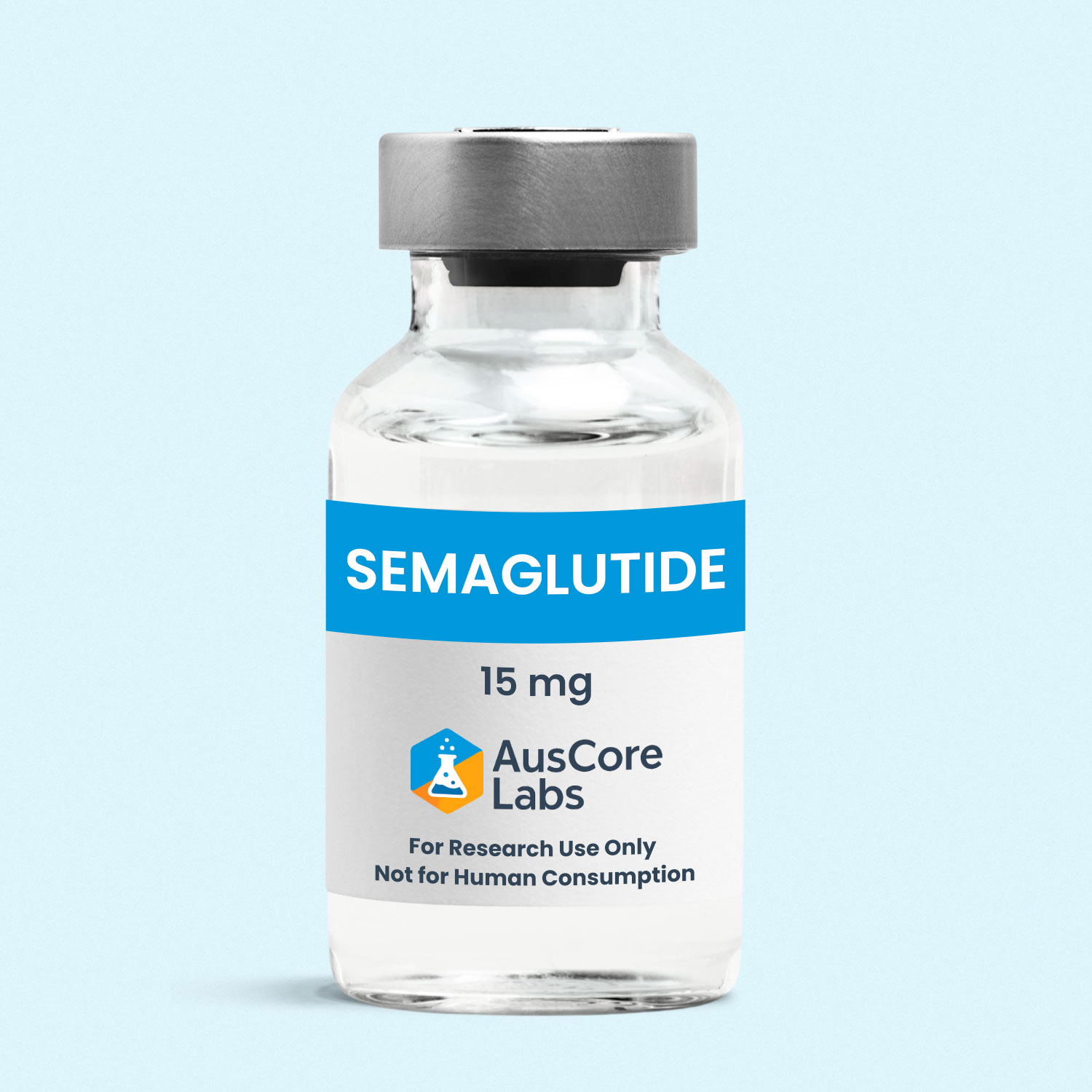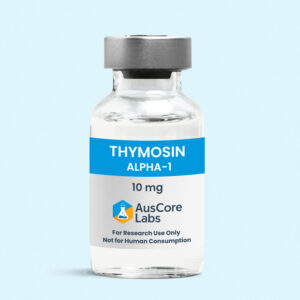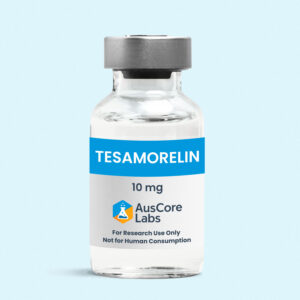Semaglutide (15mg)
Semaglutide (15mg)
$150.00
For Research Use Only – Not for Human Consumption
-
Quantity: 5mg per vial
-
Purity: ≥99%
-
Form: Lyophilized powder
-
CAS Number: [Insert if available]
-
Storage: Store at -20°C for long-term stability
DISCLAIMER:
This product is strictly intended for research purposes only. It is not for human consumption. Do not ingest, inject, or otherwise administer this product. All images and labels on this website must contain the warning “NOT FOR HUMAN CONSUMPTION.”
Semaglutide is a glucagon-like peptide-1 (GLP-1) receptor agonist originally developed to assist in the regulation of blood glucose levels in individuals with type 2 diabetes. However, recent research has expanded its investigational use into areas such as appetite suppression, weight loss, and neuroprotection, making it one of the most in-demand research chemicals in recent years.
As a synthetic analog of human GLP-1, semaglutide mimics this naturally occurring hormone in the body, which is secreted by the intestines in response to food intake. GLP-1 plays a key role in stimulating insulin secretion, inhibiting glucagon release, slowing gastric emptying, and sending satiety signals to the brain — all of which help regulate blood sugar levels and reduce appetite.
How Does Semaglutide Work?
Semaglutide binds to and activates the GLP-1 receptor, which is found in multiple areas of the body, including the pancreas and brain. When this receptor is stimulated, it promotes insulin secretion in a glucose-dependent manner, thereby lowering blood glucose without triggering hypoglycemia. It also delays gastric emptying, helping to prolong the feeling of fullness and reduce appetite. Furthermore, semaglutide’s activity in the hypothalamus is believed to help modulate reward pathways related to eating behavior.
Theoretical Benefits of Semaglutide (for research use only):
• Appetite Suppression & Weight Loss:
Semaglutide may reduce appetite and calorie intake, leading to substantial weight loss. In clinical trials like the STEP series, subjects receiving semaglutide lost up to 15–20% of body weight on average.
• Blood Sugar Regulation:
Originally designed to manage type 2 diabetes, semaglutide improves glycemic control through insulin release and slowed digestion. Research continues to study its insulinotropic effects in various populations.
• Neuroprotective Potential:
GLP-1 analogs like semaglutide are being investigated for their potential role in neurodegenerative diseases such as Alzheimer’s and Parkinson’s, as they may help reduce inflammation and oxidative stress in the brain.
• Cardiovascular Benefits:
In the SUSTAIN-6 and SELECT trials, semaglutide significantly reduced cardiovascular events in patients at high risk. This has drawn interest in studying GLP-1 analogs for protective cardiovascular mechanisms in broader populations.
• Anti-Inflammatory Effects:
Preliminary research suggests semaglutide may help regulate low-grade chronic inflammation, which is a contributing factor to many modern metabolic and neurodegenerative conditions.
Usage in Research:
Semaglutide is typically reconstituted in bacteriostatic water and administered subcutaneously in a controlled research setting. Standard dosing in studies ranges from 0.25mg up to 2.4mg per week, depending on the research protocol. It exhibits a long half-life of about 7 days, which supports weekly administration.
Pharmacokinetics:
• Half-life: Approximately 168 hours (7 days)
• Bioavailability (s.c.): ~89% in research models
• Peak plasma time: ~1–3 days post administration
• Metabolism: Slow degradation by DPP-4 enzyme and renal pathways
Safety and Adverse Effects (observed in research):
• Nausea, vomiting, and gastrointestinal discomfort are commonly reported side effects in subjects. These tend to diminish over time.
• May cause a slight delay in gastric emptying, which could affect nutrient absorption.
• Rare but notable effects include pancreatitis and gallbladder issues in long-term usage.
• Should not be used in research models predisposed to thyroid C-cell tumors based on animal studies.
Comparisons with Other GLP-1 Agonists:
Semaglutide offers superior potency and half-life over predecessors like liraglutide (Victoza), allowing for less frequent dosing while maintaining or even exceeding efficacy. Its structure was engineered for albumin binding, which enhances its durability in the bloodstream and prolongs receptor activation.
Research Highlights:
• STEP-1 (Wilding et al., NEJM 2021) – In a double-blind study of 1,961 adults with obesity, subjects on 2.4mg semaglutide weekly lost an average of 14.9% of body weight over 68 weeks.
• SUSTAIN-6 (Marso et al., NEJM 2016) – Showed a 26% relative risk reduction in cardiovascular events in type 2 diabetics using semaglutide.
Legal and Compliance Notes:
Semaglutide is a prescription-only medication in many countries and must not be administered to humans or animals outside a legal or clinical trial setting. All sales are intended strictly for laboratory research purposes.




Reviews
There are no reviews yet.